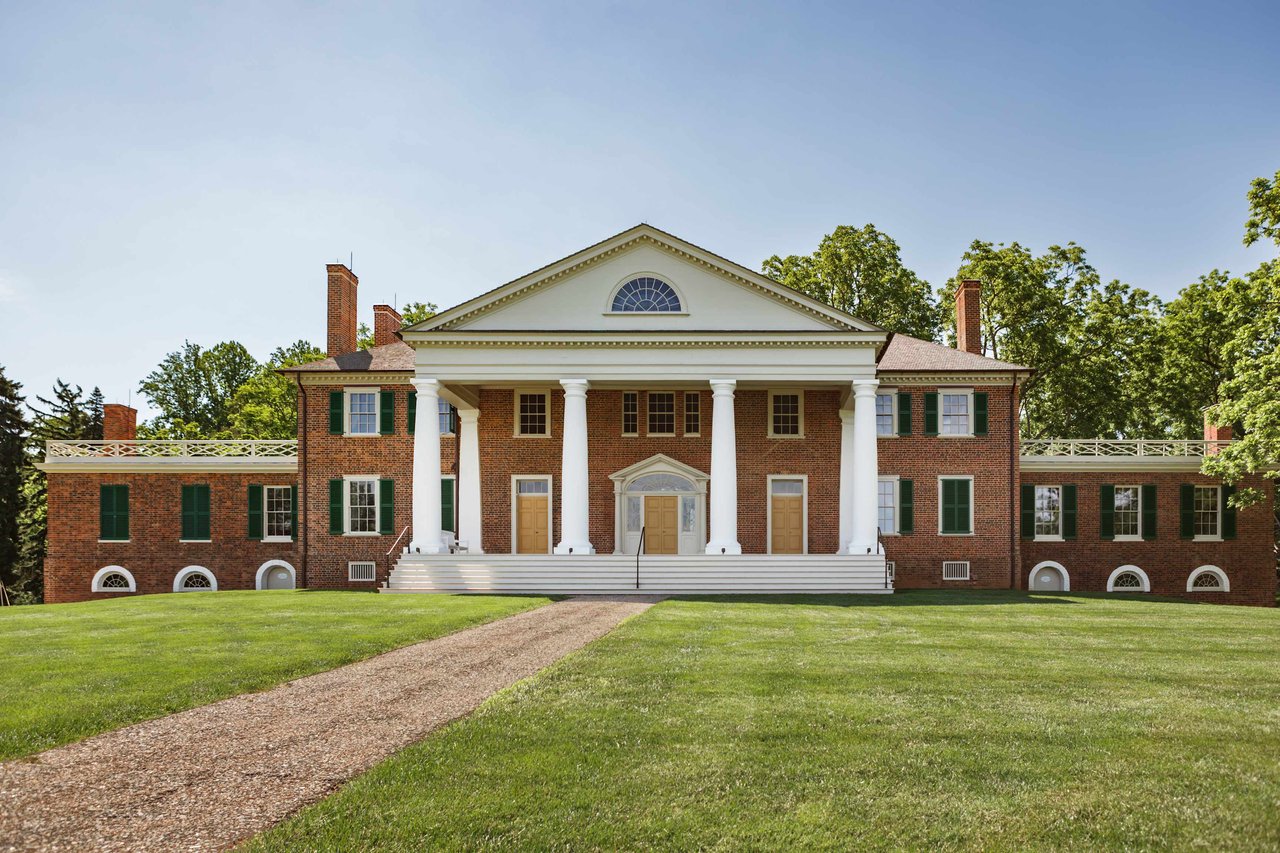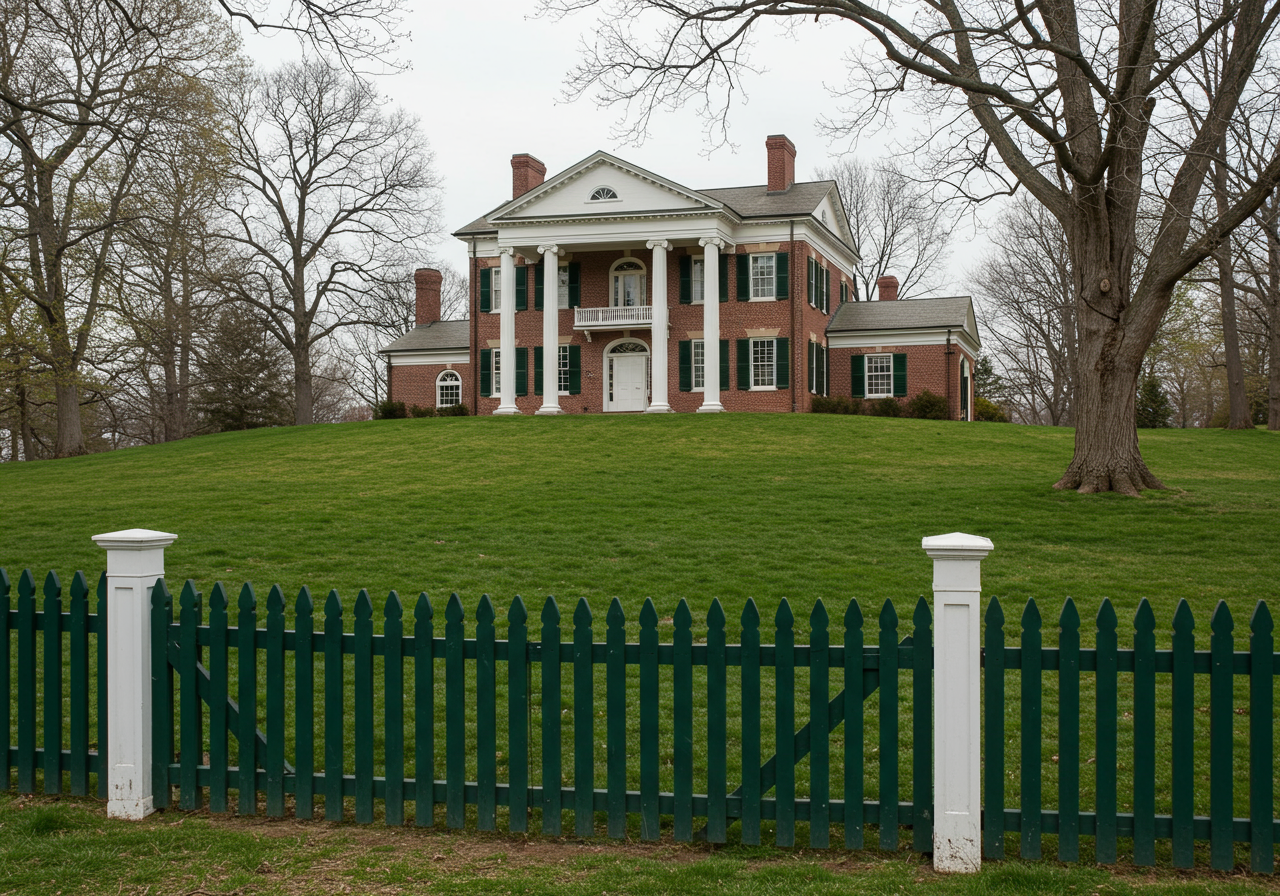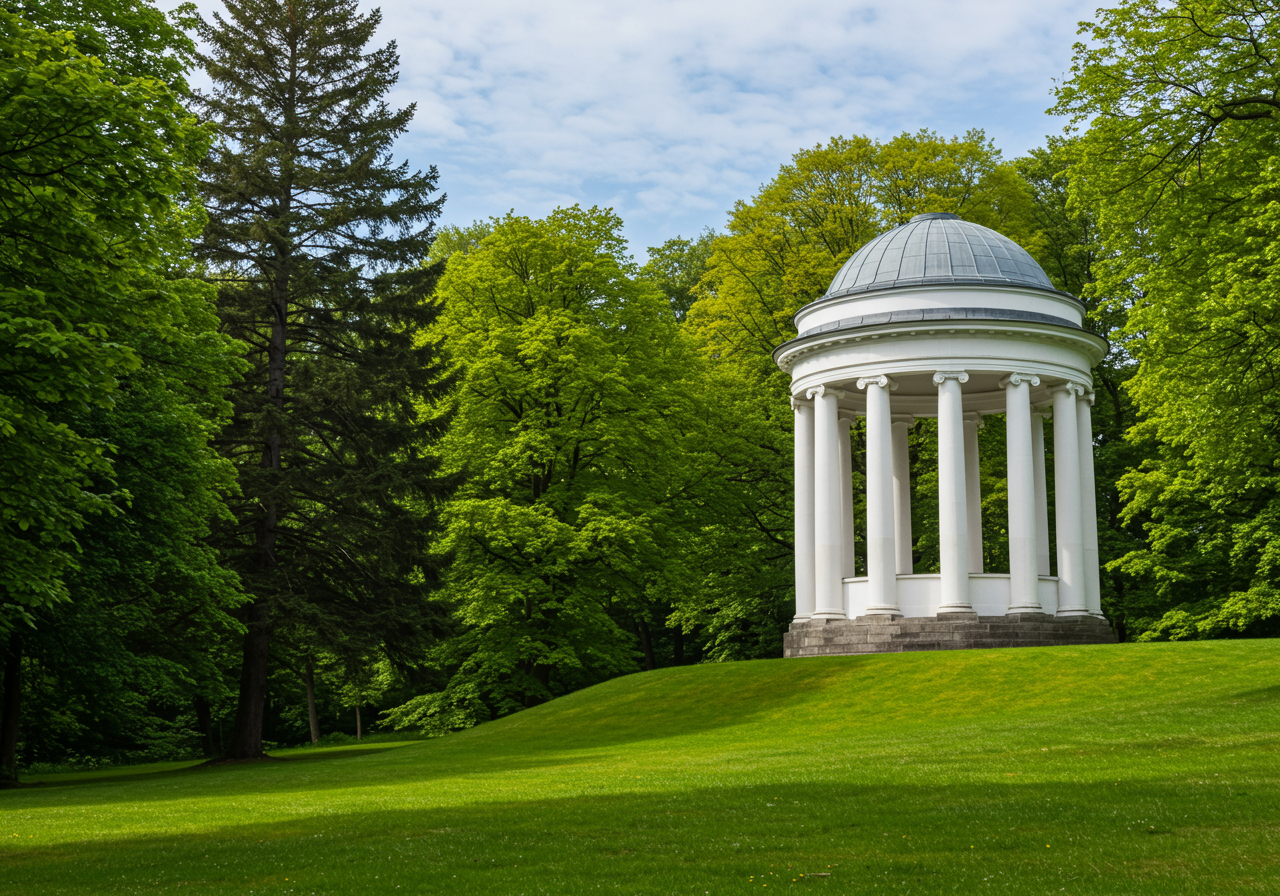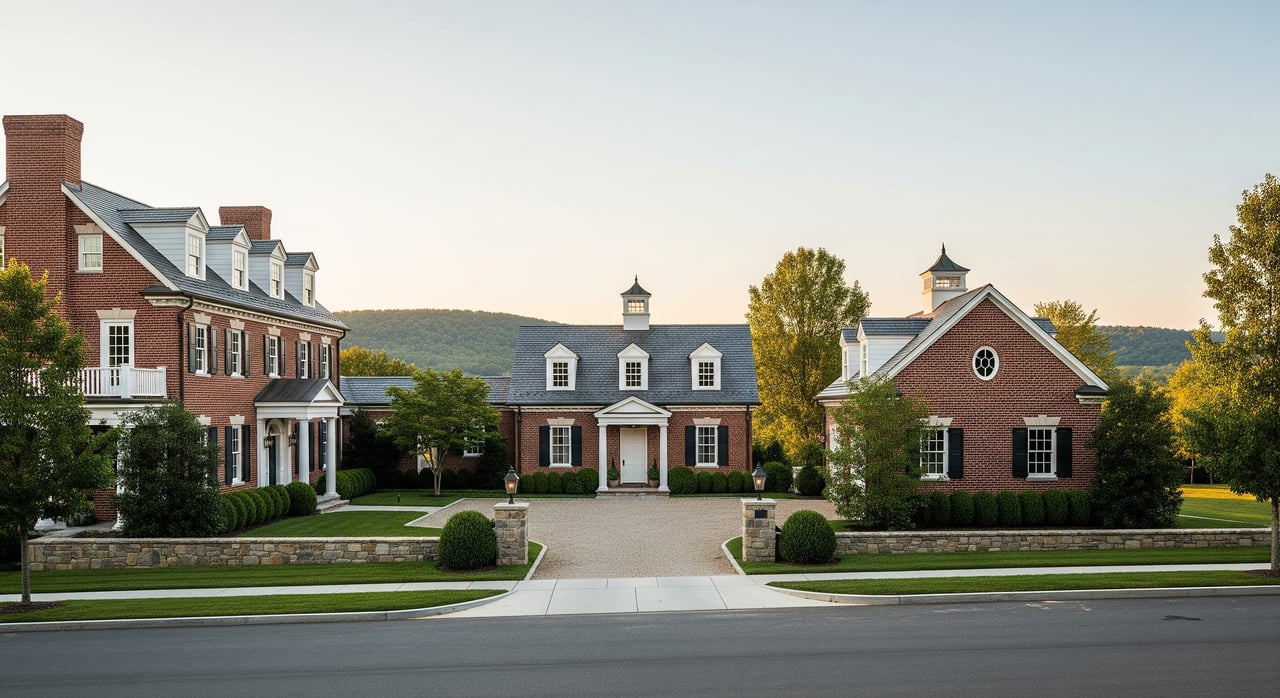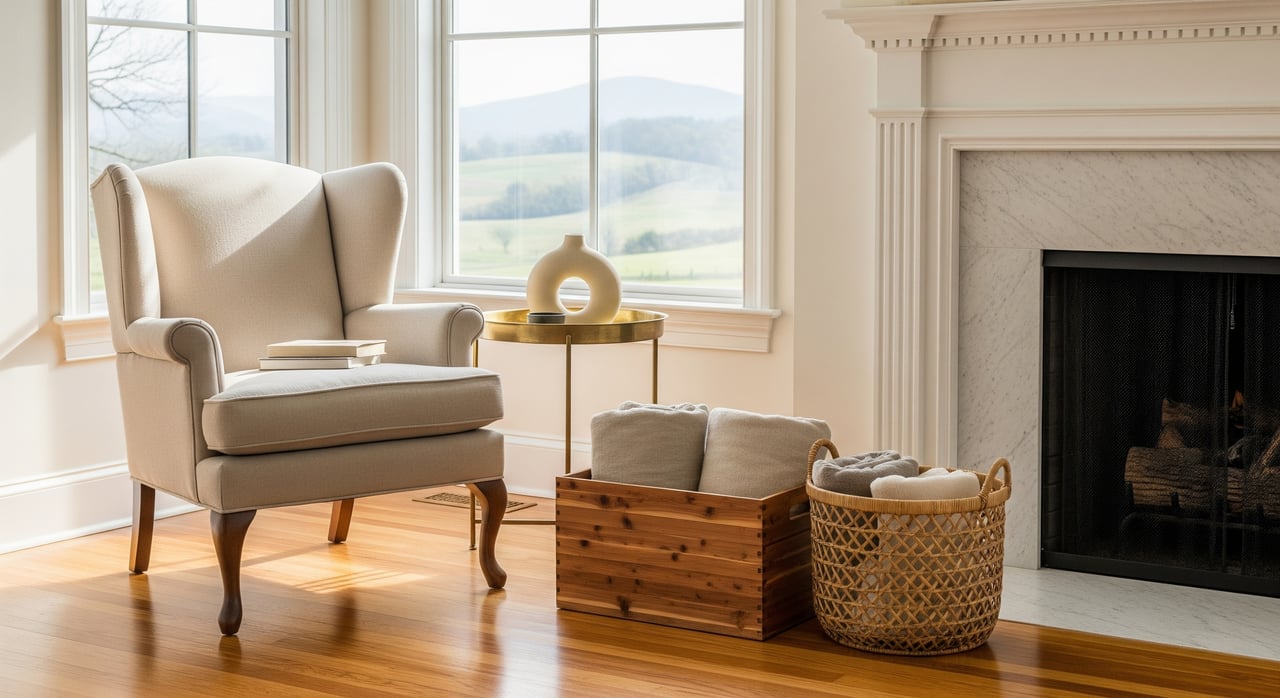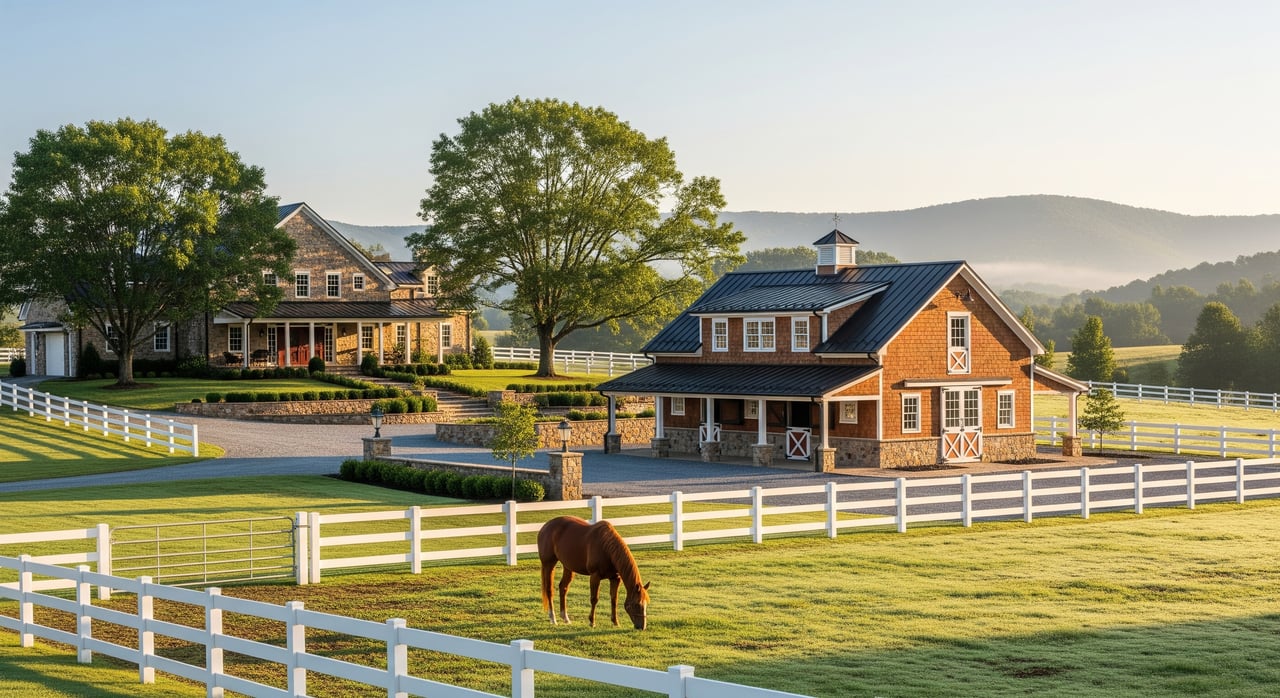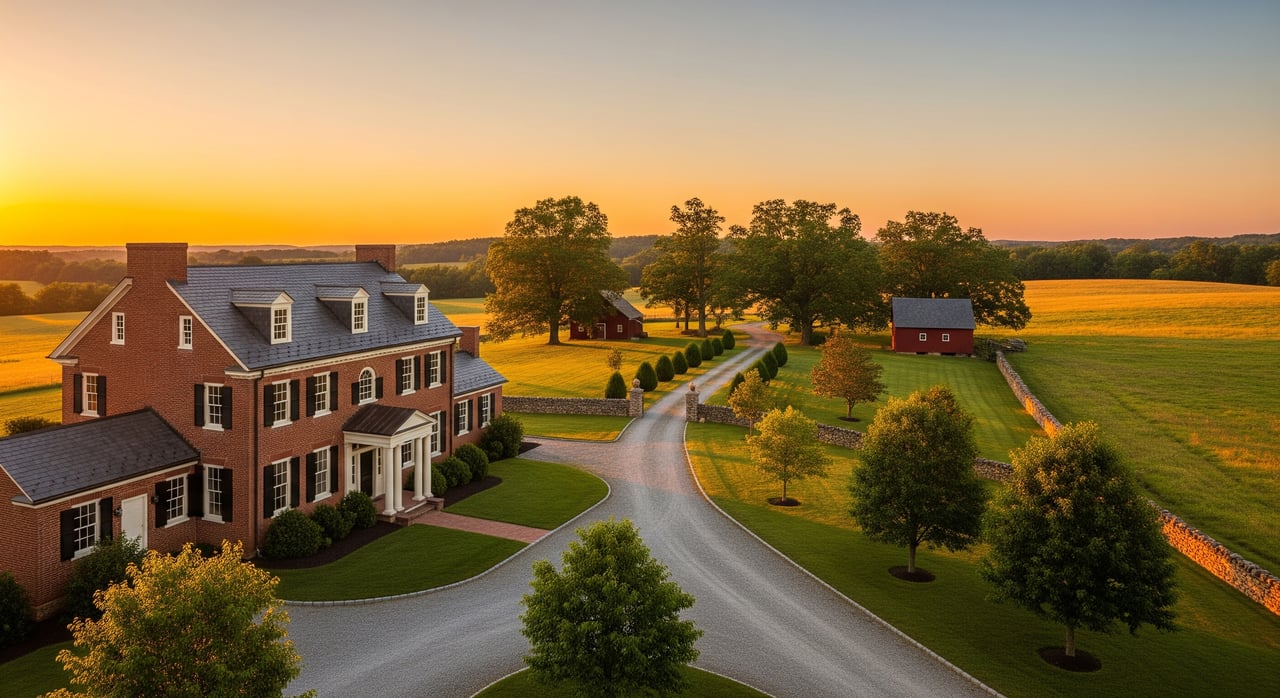Nestled on 2,650 acres in the rolling hills of Orange County, Virginia, James Madison's Montpelier stands as a testament to the architectural ingenuity and historical significance of America's fourth president. This magnificent estate, rich with history and architectural brilliance, offers a glimpse into the life and times of one of the Founding Fathers of the United States and the chief architect of the U.S. Constitution. An easy day trip from Washington DC and Northern Virginia, this historic property is a must see.
A Brief History
James Madison, widely recognized as the "Father of the Constitution and Architect of the Bill of Rights", inherited Montpelier in 1780 from his father, James Madison Sr. The estate originally began as a modest Georgian house, constructed by Madison’s father around 1764. Over the years, it evolved into a sprawling mansion, reflecting Madison's increasing prominence and wealth.
The Evolution of Montpelier’s Architecture
Montpelier's architecture is a blend of Georgian, neoclassical, and Federal styles, which evolved over several decades to accommodate Madison’s growing family and status.
The Georgian Beginnings
The initial structure built by James Madison Sr. was a two-story Georgian brick house. Georgian architecture, popular in the American colonies during the 18th century, is characterized by its symmetry, proportion, and classic detailing. The original house was relatively modest, reflecting the typical colonial style with a central hall flanked by rooms on either side.
Neoclassical Influence
As Madison's political career flourished, so did Montpelier. In the early 1790s, Madison began a significant expansion, influenced by the neoclassical style that Thomas Jefferson, his close friend and political ally, favored. Neoclassicism drew inspiration from the classical architecture of ancient Greece and Rome, emphasizing grandeur, simplicity, and elegance.
The renovations included the addition of a large drawing room and a portico with four Tuscan columns, giving the house a more formal and imposing appearance. This period of expansion not only enhanced the aesthetic appeal of Montpelier but also served to accommodate the numerous guests that Madison and his wife, Dolley, often entertained.
Photo above: The Temple at Montpelier was built in 1810 by Thomas Jefferson's master carpenter, James Dinsmore. Designed to pay homage to ancient Greek and Roman architecture, it also served in a practical manor as an icehouse.
The Federal Style Transformation
The most substantial changes came after Madison's presidency (1809-1817). During this time, the estate underwent another significant transformation, embracing the Federal architectural style. The Federal style, popular in the United States from roughly 1780 to 1840, is known for its refined elegance, symmetry, and use of classical elements.
Madison expanded Montpelier once again, doubling its size. The additions included a new wing, a large two-story portico on the rear facade, and a series of outbuildings. These modifications created a more balanced and harmonious structure, with a grander and more sophisticated appearance. The interior was equally impressive, featuring high ceilings, intricate moldings, and elegant furnishings that reflected the Federal style's emphasis on refinement and sophistication.
Montpelier Today
Today, Montpelier is not only a symbol of architectural beauty but also a historical treasure. The estate has been meticulously restored to reflect its appearance during Madison's lifetime, providing visitors with an authentic glimpse into early 19th-century American life.
The Montpelier Foundation, which manages the estate, has undertaken extensive archaeological and architectural research to ensure the accuracy of the restoration. This commitment to preserving the historical integrity of Montpelier allows visitors to experience the estate as it was during Madison’s era, from the grand drawing rooms to the expansive grounds.
Conclusion
James Madison's Montpelier is a remarkable example of American architectural evolution, blending Georgian, neoclassical, and Federal styles into a harmonious and historically significant estate. Its grandeur and elegance not only reflect Madison's prominence and taste but also offer a window into the architectural and cultural landscape of early America.
Visiting Montpelier is like stepping back in time, providing an unparalleled opportunity to explore the home and legacy of one of the most influential figures in American history. Whether you are an architecture enthusiast, a history buff, or simply a curious traveler, Montpelier's timeless beauty and rich history make it a must-see destination.
